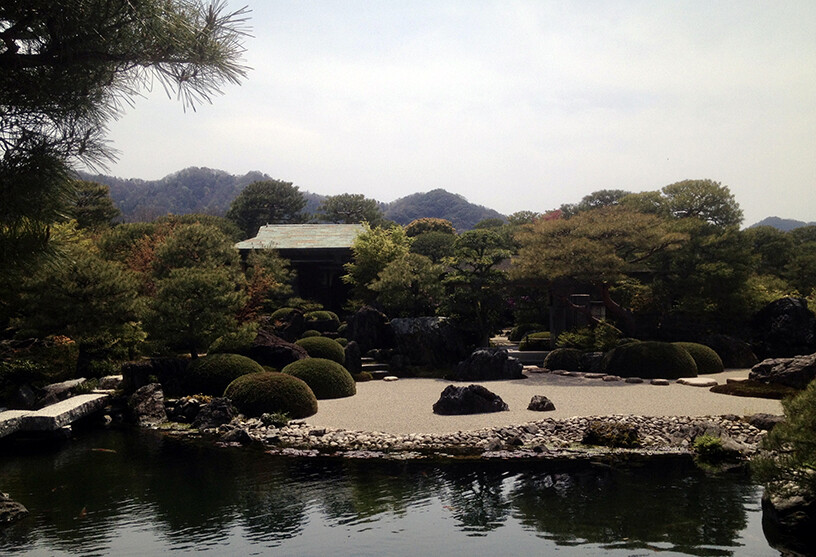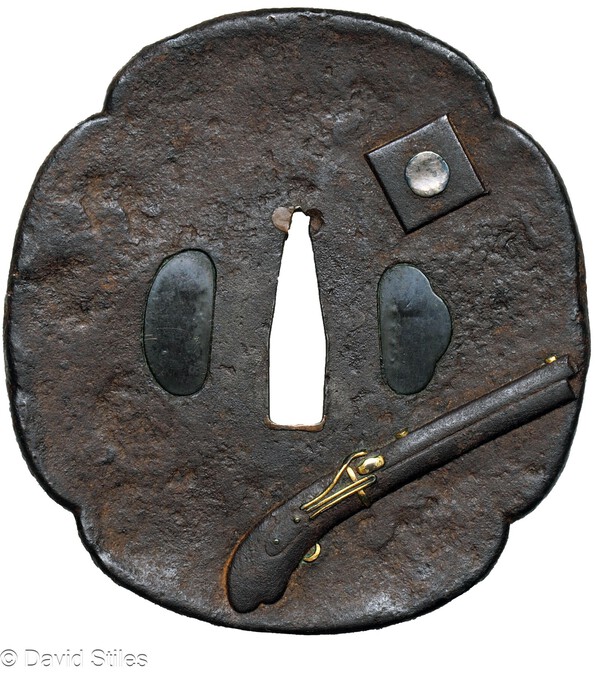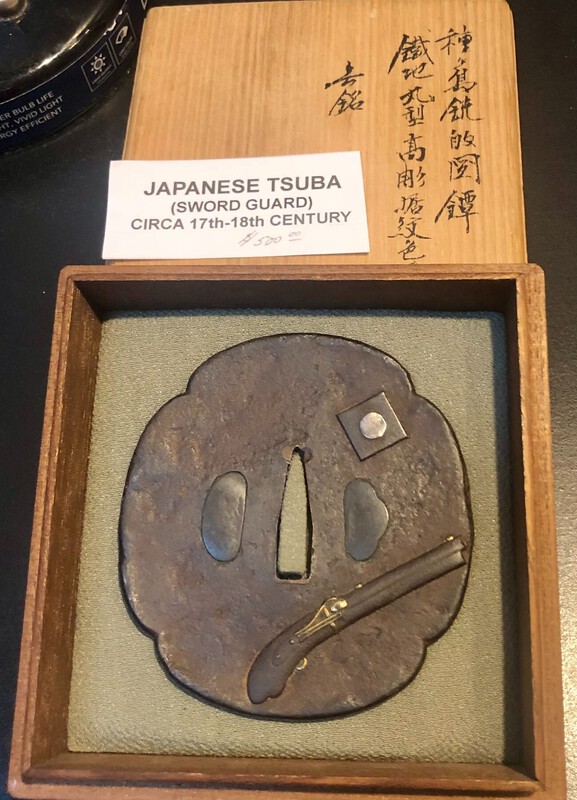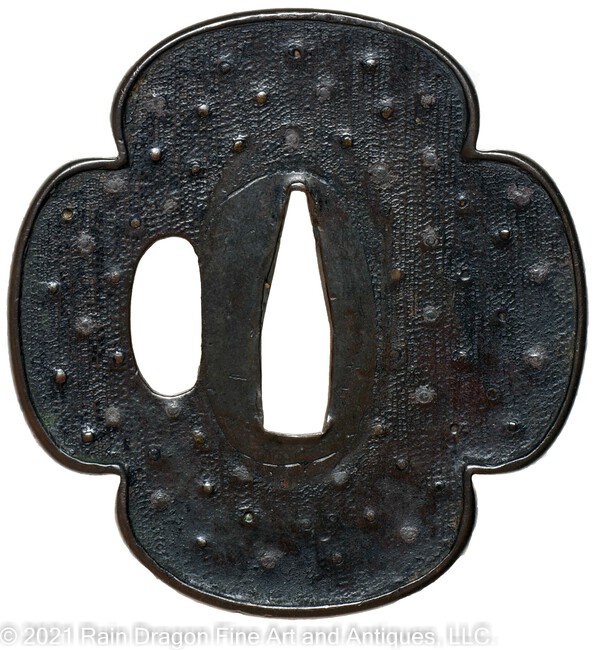-
Posts
2,904 -
Joined
-
Last visited
-
Days Won
3
Content Type
Profiles
Forums
Events
Store
Downloads
Gallery
Everything posted by Soshin
-
It is an appraisal paper not a research paper or any other type of academic document. This is not a realistic expectation for any appraisal system. Does the PCGS or NGC do this with every coin they grade?
-
Jimi-san, Well even if it is technically a modern made tsuba, it still could have some age to it. Thinking about Japanese history the modern period began in 1868 with the Meiji Restoration. I once had a nice Shinto wakazashi in a younger handachi koshirea that dated from the very end of the Edo Period to early Meiji Period. The tsuba it had was thin at the rim thickened nicely toward the seppa-dai and was made of very well forged iron. Tsuba had only been mounted once on the sword it was currently on. The other fittings were matching and made of iron as well except the menuki. On a side note, I have a few modern but all excellent quality and traditionally made tsuba in my collection.
-
Jimi-san, I am longer in business as a Japanese antiques dealer and the business Rain Dragon Fine Arts is permanently closed. I have no commercial interests. Looks like a nice modern tsuba in my opinion done in an older Edo Period style. I was not sure from the photos (nakago looks strange like it has not been mounted on a sword), but the video confirmed it for me. It would look nice mounted on a modern Japanese sword in my opinion.
-
Genuinely nice sword thanks for sharing. I am not at all knowledge about these more modern Japanese swords. Chris Bowen is the expert on Gendaitō (現代刀) in my opinion. I have aways been amazed by his level of knowledge about these more modern Nihontō (日本刀).
-

Nice example
Soshin replied to BIG's topic in Sword Shows, Events, Community News and Legislation Issues
Clever idea to have a space to answer questions about the upcoming NTHK shinsa at the Orlando Show on June 21-23, 2024. I will be submitting one sword to this upcoming shinsa and attending the show all three days. -
Thanks for the additional information about the type of gun pictured. This is helpful. The Inoue-Ryu (school of gunnery) and other schools of marksmanship used in the Edo Period would be an interesting discussion. More off topic discussion.... Don't think the zogan is post Edo but it is of higher quality and condition is nice. The oxidation on the silver and wear on the brass inlays is consistent with the Edo Period dating and many other higher quality examples I have seen. The workmanship of the iron plate nicely highlights the skill of the tsuba maker to forge iron with different contrasting surface textures. I have seen similar high-quality inlays of mixed soft metal inlays on a papered Aizu Shoami tsuba I once had in my collection. The plate mental of that tsuba didn't have the same dynamic textures and iron bones as the plate of this tsuba. This is what drawing me towards the Ko-Nara Ryūha (古奈良流派) versus Aizu Shōmai Ryūha (会津正阿弥流派).
-
Hello everyone on the Tanegashima / Teppo / Hinawaju discussion form. This is my first post on this group. I was reviewing the handwritten notes about a new tsuba I added to my collection at the Baltimore Antique Arms show last month whose subject is a pistol and its accessories. I was able to see some nice antique Japanese pistols while at the show and this likely influenced me to get this tsuba. The notes made by the previous owner are below. Here is the tsuba. Here is a composite of both sides to show both the pistol and all its accessories. Any additional information about the pistol would be helpful as it might make dating this unsigned tsuba easier. Thank you.
-
I remember years ago being told and reading not to clean the inside surfaces of the sukashi of tsuba. It would be messing with age determination of tsuba much like cleaning the nakago of a Japanese sword.
-
A downvote on the message board is just a mark of disagreement based upon the conclusions stated in that specific post. It should not be viewed as any type of personal attack period. All personal attacks are not permitted here. Here is an article I have read years ago about cast-iron reproductions of tsuba made in Japan (cast iron (ksky.ne.jp)). Cast-iron reproduction tsuba with exceptionally large open work designs are weak and nonfunctional as indicated in the linked article. I really cannot be sure 100% @GeorgeLuucas until I examine your tsuba in hand to confirm, but based upon the photos provide it looks to be forged iron tsuba that does show some age-appropriate (for an antique from the Edo Period) surface damage caused by rust that has since been removed and the surface patina stabilized. I once had a cast-iron reproduction of a tsuba that was a convincing fake (it fooled me, the original owner, and the dealer who sold it to me) until you examined it very closely in hand and noticed the weight of (lack of weight) the tsuba you cannot be 100% sure of anything.
-
So, newbies in the USA (Dan and Sam S.) now say Owari Tsuba are "cast". I would love to see and feel this tsuba in hand. I don't see anything as such from the limited number of photos provided. What I do see looks to be rust and corrosion damage to the plate surface. There are several iron bones along the rim typical of Owari Sukashi tsuba. If this form lacks high quality examples in excellent conditions to study, I have a few that I can offer to discuss that were once or us still in my collection.
-
I took some better photos of this tsuba over the weekend for update of my website (www.tsubaotaku.com) next month. Here is a low-resolution copy of one of the photos small enough to upload. I came across the previous owners notes about this tsuba. He was thinking it was a work of the Ko-Nara School. The iron bones are nice along the rim on this tsuba making me agree with the Ko-Nara School call but need more information. I have never had any Ko-Nara School tsuba before in my collection and need to read up on them in general. I did come across this webpage with information on Japanese Sword Index: Japanese KO-NARA TSUBA (japaneseswordindex.com)
-
All three examples basically support the point I was trying to make. Time to move on and talk about other things.
-
Just ideas about this tsuba that has long since left my collection. While the carving style is an old one seen sometimes in the Kamakura-bori style of tsuba the rim shape is very atypical of Kamakura-bori style tsuba as well as the other thickness of the tsuba. I now have two Kamakura-bori style tsuba in my collection and they have hugely different style rims and very thin plates. The carving and along the rim are also not seen in Kamakura-bori style tsuba. The gold inlayed eyes are also not something seen in Kamakura-bori style tsuba. The plain Higo call to that tsuba means the NBTHK was not able to put the tsuba into one of the five main schools of Higo Provience (Kamiyoshi, Hayashi, Nishigaki, and Jingo). There were other independent artists working in Higo Province both professionally and as a side hobby while being samurai during the Edo Period. Of these five main schools of Higo Provience my old tsuba shows most similarities with the Jingo School.
-
Thank you for your reply @Jussi Ekholm. Contacting the European branch of the NBTHK might be a good idea. Not sure as I haven't directly interacted with the group living in USA and being a member of the American branch of the NBTHK. I remember seeing many European visitors while I was there in November. While visiting Japan I always found in and around the hotel a delightful place to study while on vacation. This reminds me I need to get back to reading the new Umetada booked I picked up the NBTHK Japanese Sword Museum last November. While reading it on my vacation it made me appreciate the Umetada tsuba I have in my collection just that bit more.
-
Thanks everyone feedback. I will be doing much better photos this month. This was just a quick iPhone photo. I have sent the photo to the previous owner to get more information about the tsuba provenance and the person who wrote the inscription on the box. So far, I think my unsigned tsuba was likely made by the Aizu Shōami Ryu-ha (会津正阿弥流派) circa the middle to late Edo Period.
-
I picked this tsuba up for my collection at the 2024 Baltimore Antique Arms show last month. It is the current focus of my tsuba study. Rare musket pistol and target theme in excellent condition. Feel free to discuss it politely.
-
Maybe, but not likely as the Saotome School was not known for their soft metal inlay work. Post a photo of the tsuba and everyone can discuss it or just send me a photo of it via PM for a more focused private opinion.
-
There are many mediocre quality Japanese swords, and thus many mediocre quality tsuba and other fittings to go with them. I think at a basic level are all worthy of preservation because if they are not, they are ready for the recycling bin in Japan. Papering system by the NBTHK, NTHK, or NTHK-NPO is not the problem per say, its people not putting in much sustained study, thought, and all-around effort before purchasing to have a good well-rounded collection. With that said I need to get back to studying before work.
-
Some general rules I like to follow regarding Japanese swords and sword fittings. If you think it will pass and not a (gimei 偽銘) and you like the piece enough to keep it a while in your personal collection, then papering is fine don't be in a hurry. Don't be like @Infinite_Wisdumb and be expecting a quick flip of the item especially when the piece is unsigned and only mediocre in quality.
-
2024 is my last great submission year for me as a collector. I have a fair number submitted this year (all confirmed accepted by the NBTHK via broker in Kamakura) that group represent the "bread-butter" of my collection. Next year and beyond I am going to focus only on a very few higher end pieces for the NTBHK Tosogu shinsa. I am in complete agreement with the points @Gakusee had made. I deeply respect @Curran, but do not completely agree with some of his points. Look at all those old people in the photo @Gakusee posted. It is fundamentally a demographic problem. This hobby's demographic problem is not at all limited to Japan in my opinion.
-
It looks like a nice iron tsuba with an appealing design. A nice addition to any Japanese sword in your collection thanks for sharing. I would estimate the age ranging from mid to late Edo Period circa the 18th to mid 19th Century. From my own experience and study, it is likely an unsigned work of the prolific Shōami Ryū-ha (正阿弥流派) school after they had branched out from Kyōto (京都) into the different provinces after the Muromachi and Azuchi-Momoyama Periods. I have seen similar signed examples made by artist of Aizu Shōami Ryū-ha (会津正阿弥流派).
-
Unfortunately, I don't have the tsuba in hand or I would try to provide photos of inside surfaces of the nakago and hitsu-ana. I remember seeing a distinct three-layer construction to the plate. The texture you see was applied to the surface of both thinner outer most plates. All three plates (the two thinner outer and one thicker inner plate) are I think held together by the rim cover. An interesting design to what I think is an older pre–Edo Period soft metal tsuba.
-
Here is an early one I think, I have submitted for NBTHK shinsa this year. The surface has a nice layer of black lacquer applied to it. The design is a plain textured surface with copper and lead inlays. The plate construction is made up of three layers with rim clover holding everything together very tightly.







